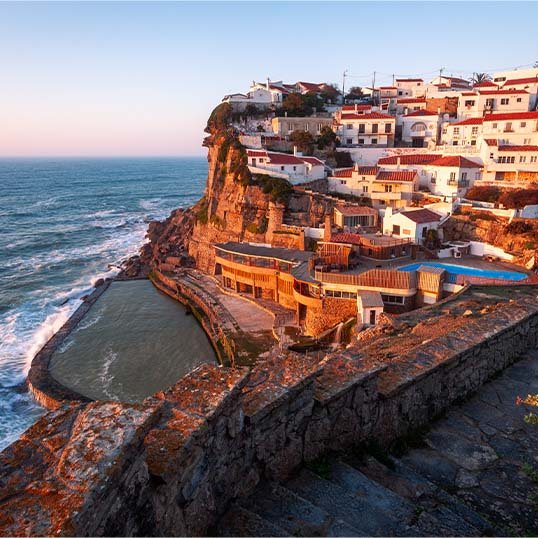Attractions
Fundação Calouste Gulbenkian: a historic treasure in the centre of Lisbon
A very rich natural and cultural heritage in the center of Lisbon: this is how we can characterize the Fundação Calouste Gulbenkian. Although commonly known for its garden and library, this space is much more than that. In fact, each square meter carries immeasurable importance, both for cultural and human development in Portugal and abroad.
If we see it from the outside, it’s a space of unusual beauty, mainly due to its construction, disruptive for the date and remarkable for the Portuguese architecture. More than the magnificence of the buildings, the uniqueness of the garden that surrounds them makes the Gulbenkian a very pleasant space, often sought by those who are looking for peace and quiet, whether to read, to study, to date or to sunbathe in the wonderful afternoons of Lisbon. Truth be told, we can’t even mention this garden as being an ordinary one, among so many, in the Portuguese capital; the Gulbenkian garden is, we must admit, a small oasis and a pure source of nature, with nooks and crannies, zigzags and shortcuts, which delight couples and children.
If we see it from the outside, it’s a space of unusual beauty, mainly due to its construction, disruptive for the date and remarkable for the Portuguese architecture. More than the magnificence of the buildings, the uniqueness of the garden that surrounds them makes the Gulbenkian a very pleasant space, often sought by those who are looking for peace and quiet, whether to read, to study, to date or to sunbathe in the wonderful afternoons of Lisbon. Truth be told, we can’t even mention this garden as being an ordinary one, among so many, in the Portuguese capital; the Gulbenkian garden is, we must admit, a small oasis and a pure source of nature, with nooks and crannies, zigzags and shortcuts, which delight couples and children.
Inside the buildings, it is a concentration of cultural and scientific resources, with a huge worldwide value for society and for human development itself. With the main goal of "improving the quality of people’s lives through art, charity, science and education", the Foundation has developed several activities of a humanitarian nature that aim to contribute to a more just and sustainable society. Its activities and cultural offerings are vast and for audiences of all ages, and have repercussions, not only in Portugal, but also all over the world — especially in PALOP (Portuguese-speaking African countries), East Timor and Armenian Communities (origin of the meritorious founder).
Alongside the Garden (not only a place of leisure but also the stage of many educational activities), at the Fundação Calouste Gulbenkian we highlight:
Calouste Gulbenkian Museum
The place that houses the founders’ private collection of art (and his entire art state, including his private library), and also one of the largest collections of Modern and Contemporary Portuguese Art.
Grand Auditorium
With a capacity for 1228 seats, the auditorium of the Fundação Gulbenkian, which includes the Orchestra and the Choir is the venue of numerous classical music concerts, as well as opera, theatre and dance performances.
Gulbenkian Art Library
A library that brings together an extensive collection of works from the most diverse areas, although with a focus on visual arts, architecture and design. It is a favourite place for students, as it has a very high number of publications, from the oldest to the most contemporary, essential for any work that is developed in one of these areas.
If the extensive catalogue makes the Art Library a notorious source of information, the fact that you can also find here part of the private collection of its founder — more than 3 000 monographs and periodicals — makes it unique and with great relevance for the city of Lisbon and even for the country.
Gulbenkian Institute of Science
It is not placed in the same spot, but it also deserves our highlight. This scientific research institute is a research center dedicated exclusively to research and postgraduate training in Biological Sciences. Since its creation in 1961, it plays a vital role in the field of research in Portugal.
And now last but not least: who was the benefactor responsible for this tremendous treasure?
As the name suggests, Calouste Gulbenkian (or Calouste Sarkis Gulbenkian), an Armenian philanthropist, born in 1969. Calouste was a visionary man, "business architect” and with an intelligence above average — consequence of the contact with different cultures and languages over the years and the interest for the world of business (and the art of negotiation) at a very young age. It is said that he was only deceived once when he was a child, but it was precisely from that moment that he developed a brilliant negotiating capacity.
Calouste Gulbenkian was also humanist and philanthropist, as well as an admirable art collector, having accumulated a vast collection of art and goods, along with an unprecedented fortune, both unique in the world. By personal choice (a place that he loved) or strategic decision (the country's impartiality in World War II), Lisbon became his home in his last years — from 1942 to 1955, the year he died.
In order to demonstrate his deep gratitude, he requests in his will the construction, in Lisbon, of an international foundation’s headquarters "for the benefit of all humanity”. In this space, he wanted to preserve a large part of his wealth to serve as education and inspiration for future generations and, above all, and globally, to change the way of thinking, seeing, feeling, appreciate and "live” the culture.
Find out more about this masterpiece of modern architecture on the official website of the Calouste Gulbenkian Foundation.


